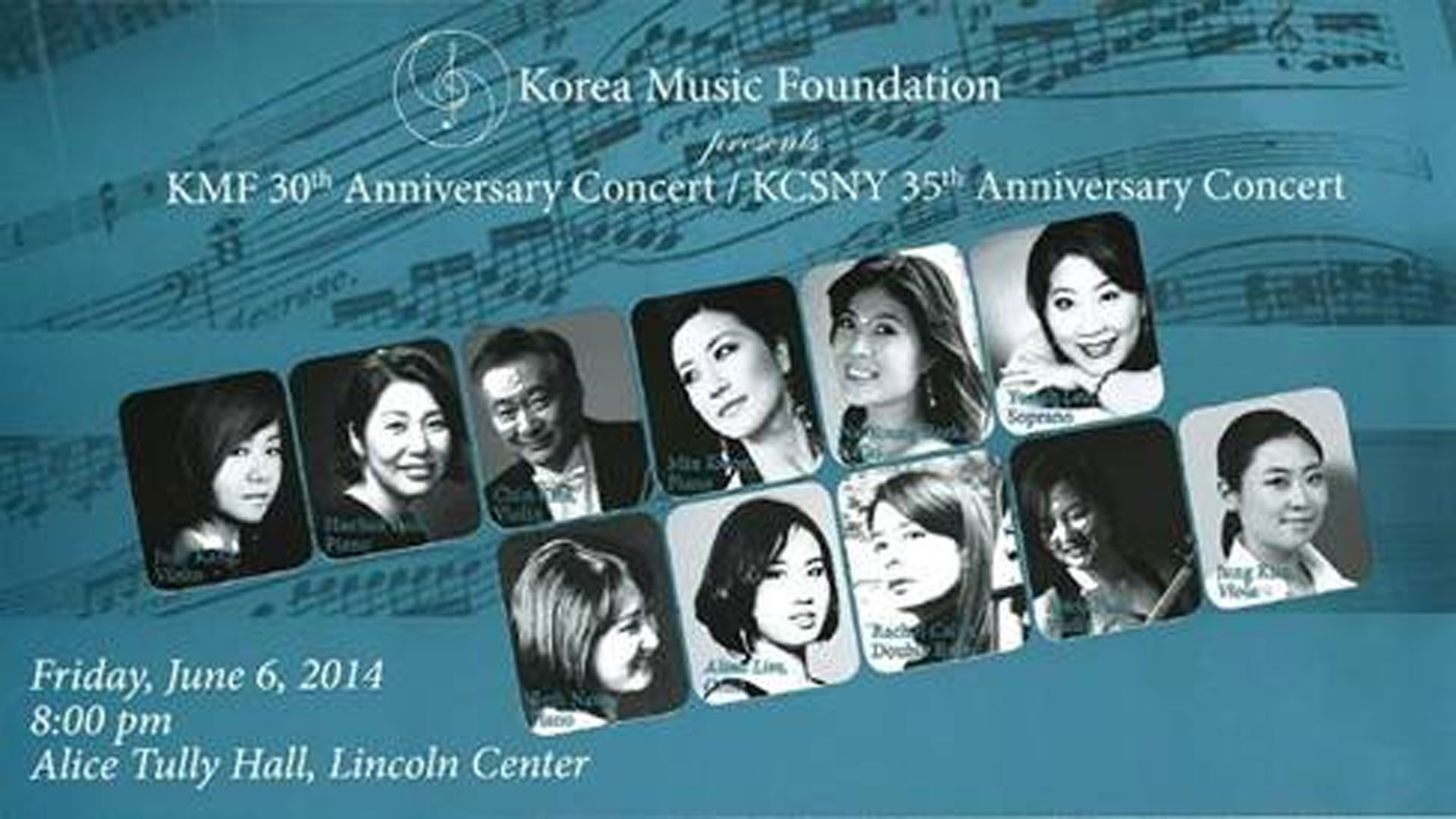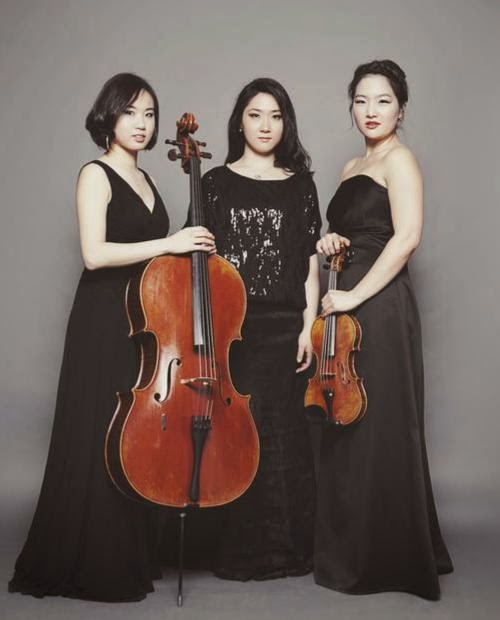Immersed in the stylish, staccato chatter at Alice Tully Hall on the evening of June 6, it was easy for one to surmise a thirty-year triumph for the Korea Music Foundation (KMF) and a fulfilling thirty-five-year stint for the Korean Cultural Service NY. Started in 1984 as a non-profit platform for Korean rising talent (somewhat less extensive than our Young Concert Artists, which provides management services for international winners, or Great Britain’s Young Classical Artists Trust, which promotes stars resident in the U.K.), the Korea Music Foundation invests in New York début recitals, orchestral concerts, chamber music, and fundraising events for its younger protégés and more established Korean performers. The Korean Cultural Service NY offers an array of annual concerts, exhibitions, films, and educational presentations on its premises at 460 Park Avenue. The convergence of these two groups’ respective celebrations resulted in a sure-to-please Lincoln Center gala of silks, flowing pastels, and generously delivered oceans of virtuosic passagework, conveyed by KMF favorites through a captivating, predominantly nineteenth-century program of solo and chamber works.
Four pages of insightful commentary by an unnamed author filled in the listener’s overwhelmingly upbeat experience. Even the most desolate of the program’s four substantial works, Ernest Chausson’s Chanson perpétuelle, Op. 37, for soprano, piano, and string quartet, a woman’s sensual suicide letter to a lover who has defaulted on their pact, was given a buoyant and transparent reading in the honeyed colors of Yunah Lee’s rich soprano and the tender, tremolando swells of strings and piano. Relying on exaggerated dynamic hairpins but never covering the voice with their muted chromatic undulations and immaculate intonation, the strings (Judy Kang and Anna Park, violins, Jung Yeon Kim, viola, Alina Lim, cello) and piano (Beth Nam) might have beckoned to Ms. Lee from a plush summer landscape rather than from the grief-stricken numbness of eternity; the sextet’s perspective seemed to stress the latter element in Poulenc’s 1950 description of French music as a coexistence of “somberness and good humor.” Poulenc surely knew of the work; Chausson’s last completed composition before his tragic end in a bicycle crash in 1899 preceded Poulenc’s forty-minute operatic soliloquy on the same subject (La voix humaine) by sixty years. The eight-minute Chausson may be performed in a version for soprano and orchestra, which might give an even more harrowing treatment to the stanzas of Charles Clos.
The Norwegian composer Johan Halvorsen supplied the concert opener, his 1894 Passacaglia based on the last movement of Handel’s Keyboard Suite in G Minor, HWV 432. Arranged here for violin and cello (Ms. Kang with Na-Young Baek), the piece overlays Handel’s durable harmonic progression with a Grieg-like double-concerto quality, gilded double stops and runs, pizzicato and spiccato variations, and festive twitters. The transcription is a perfect pleaser for any crowd, purists notwithstanding. Ms. Kang and Ms. Baek fed the delighted ears of a giddy weekend audience with tailored string acrobatics and tonal effects burnished to order, although the most fascinating sonorities emerged from their sul ponticello excursions over the bridge and the sustained polyphony produced by double stops in mock quartet texture.
The program’s central spotlight was rightfully reserved for HaeSun Paik, the solo pianist in Beethoven’s Fifteen Variations and Fugue in E-flat Major, Op. 35 (nicknamed “Eroica” for the Third Symphony, Op. 55, which used the rustic original theme in its finale). Ms. Paik, the most experienced of the evening’s performers, is a faculty member at the Cleveland Institute and a laureate of many of the world’s prestigious piano competitions, and her collaborations with recognized conductors and ensemble partners has only fortified the inner structure and warmth in her playing. Undaunted by the grandeur of the large-scale form and its nickname, Ms. Paik maintained drive and exquisite control while bringing out the playfulness in Beethoven’s silences, giving effervescence to double-throws and hand crossings in the early variations and casting the fugue as a youthful, untroubled precursor to those in Beethoven’s late sonatas. Most poignant in her delivery were the Minore (Variation 14) and its sequel, the timeless Largo (Variation 15), which left behind the country dance and basked in a soft-hued cadenza, gathering strength for the final spectacle of trills and meticulously sculpted articulations. That said, one could plead a case for an occasional lapse of sheer beauty and intimacy in Beethoven’s stormy op. 35; the concurrence of this piece with the realization of increasing deafness and isolation documented in Beethoven’s heart-wrenching Heiligenstadt Testament of 1802, the year of composition of the “Eroica” Variations, would warrant at least a hint of irony, a germ of the Teutonic strength that could ignite the century’s defiant spirit.
Adrenaline peaked in Schubert’s “Trout” Quintet in A Major, D. 667 for piano and strings, with Min Kwon, piano, established violinist Chin Kim (faculty member at three New York conservatories), Ms. Kim and Ms. Baek, viola and cello, and Rachel Calin, double bass. Five dramatic soloists united to produce an exuberant, visceral version of this well-chosen, conventional masterpiece, closing the anniversary gala with a show of appeal in every sense. Mr. Kim provided seasoned leadership and snappy dotted rhythms, although these were not always echoed as brightly in the piano’s imitations. Of special mention was the superbly mellow, elegant tone of Ms. Calin, who played a Carlo Giuseppe Testore double bass from 1690. It is curious that the deadlines of our modern administrative machinery whirr by without advance knowledge of the interpretations that will follow in real time: the adjectives “expansive,” “leisurely,” “tranquil,” and “conversational” in the Notes on the Program could not catch up with the lightning vibrato and glittery urgency of this ensemble, whose effective conception might have been more suited to the late romantic; although Schubert’s Scherzo was Presto, and impeccable.


